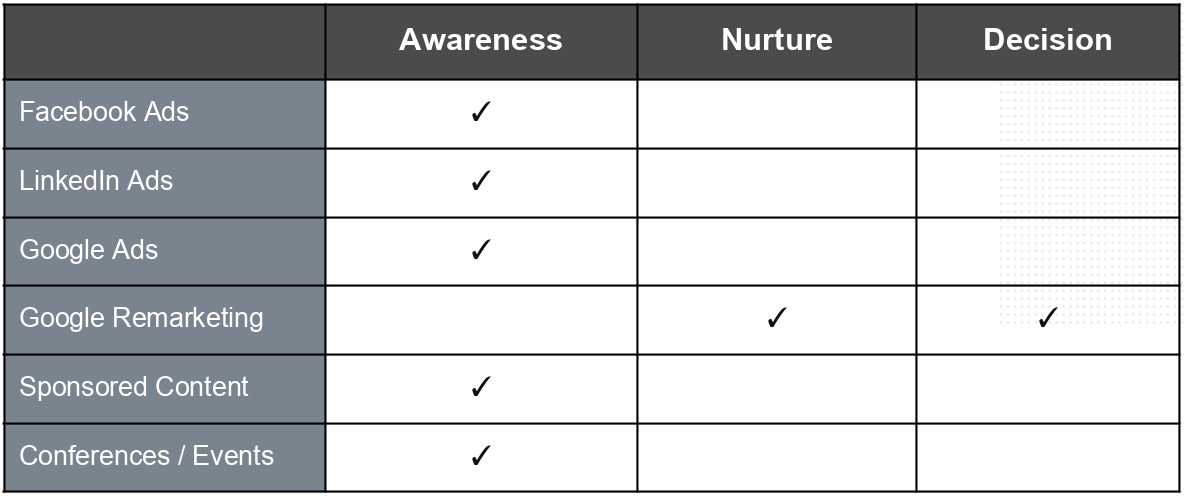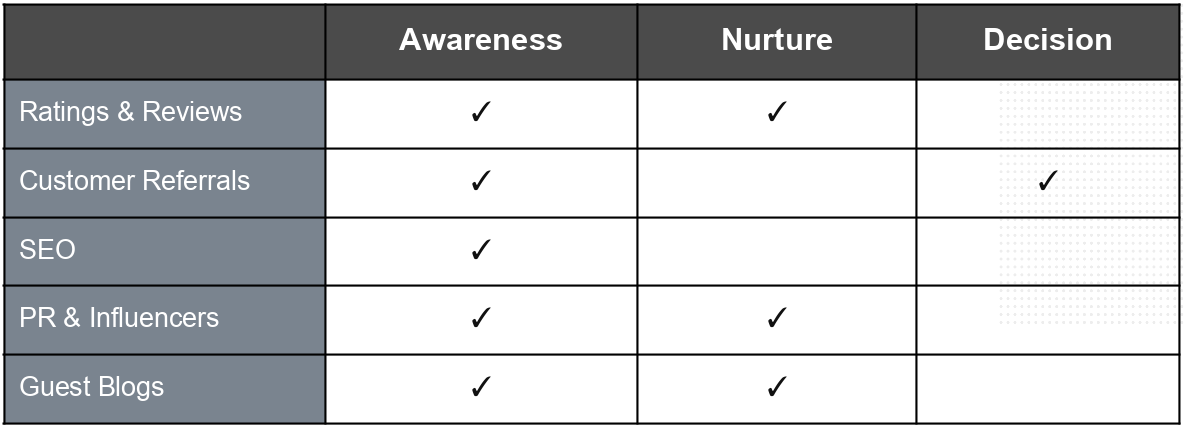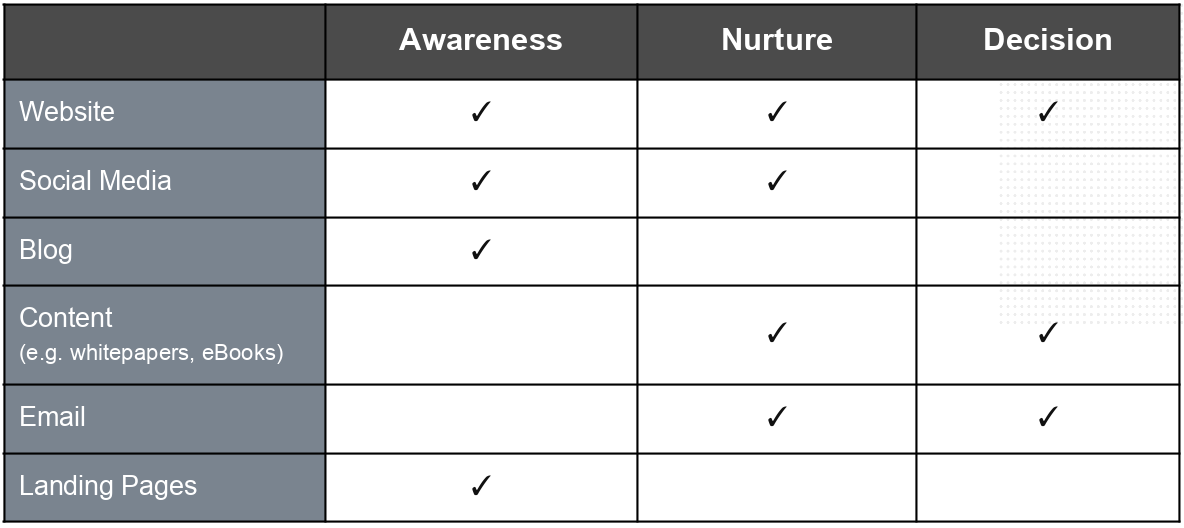When you’re ready to start driving customers to your business, where do you start? Do you go for paid ads or blog posts, conferences or social media, sponsored content or PR? The answer: it depends.
Without first identifying where your customers are in the buyer’s journey, an approach that lets you know how much they understand their needs and problems and therefore how best to address them, your marketing tactics could fall flat.
Once you get a strong handle on where your customers are, you can select the marketing channels that drive marketing spend efficiencies and drive customer conversions.
What Is The The Buyer’s Journey
The buyer’s journey is the process individuals go through to learn about, consider, and ultimately decide to buy a new product or service. When we talk about the buyer’s journey, there are two things to keep in mind. First, we need to understand the general stages themselves, which are fairly universal regardless of they type of business you’re in. Second, we need to understand how those general stages map to aspects of your business.
The Different stages in the buyer’s journey
Generally speaking, there are three stages in the buyer’s journey:
-
Awareness: This is the earliest stage in the buyer’s journey. At this stage, a prospect may have a need, but they may not be fully aware of it nor do they know how to address it. At best, high-level, unstructured exploration may be happening at this stage.
-
Nurture / Consideration: At this intermediate stage, prospects are ready to start actively reviewing existing solutions to address their problem. While they may not know what options are out there, they are beginning to engage in focused research and exploration.
-
Decision: In this last stage of the journey, prospects have narrowed down the options they feel will solve their problem and are actively comparing them. At this end stage, very specific deliberation and analysis is happening.
Key Buyer Journey Inflection Points
While the three stages we just outlined are fairly standard across businesses, each business needs to assess what activity triggers someone from moving to the Nurture stage, or the Decision stage.
In B2C businesses, Awareness to Nurture is often triggered by submitting an email address to a newsletter or other email list while Nurture to Decision can be reflected by browsing different products. In B2B, you’ll often see Awareness is triggered by email capture or by downloading a basic piece of content while Nurture or Decision can be triggered by accessing relevant site pages (e.g. pricing), requesting more information from sales, or beginning a trial.
There are, of course, objective ways to assess these inflection points:
-
Look at Behavior Metrics: With enough volume, you can often see clear behavior patterns in where individuals begin to drop off in their engagement with you. It might be high exit rates from a particular website page or non-return rates after giving you their email address. Looking at exit patterns within your customer behavior can help isolate these inflection points.
-
Perform a Journey Mapping Exercise: If your business is fairly new and you don’t have the data you need to look at metrics, or you’re in a low volume business so the metrics aren’t too telling, you can also perform a journey mapping exercise. This qualitative process lets you see the buying process from your customers’ own eyes, helping you identify key go / no-go moments in the purchasing process.
Mapping Marketing Channels to Journey Stages
Once you have a strong understanding of where your prospects are in the journey process, you’ll have a far stronger understanding of which tactics you can leverage to move them down the journey and make them one step closer to being a paid customer. After all, as we’ll see below, the three types of marketing channels–paid, owned, and earned–are best leveraged at different times.
The Role of Paid Marketing In The Customer Journey
Paid marketing includes activities that you actively pay for. This includes anything from social media advertising and publishing sponsored content to conferences and events. The quick turnaround of paid channels is great, but they cost money!
And, as you’ll note below, paid tactics are ideal for driving early awareness. This is generally because paid tactics lack much nuance. You can get in front of (hopefully) targeted audiences, but you can’t offer much information in that initial contact. As a result, paid channels can help pique interest, but they are rarely sufficient to to make someone convert out of the gate.

The Role of Earned Marketing In The Customer Journey
Earned marketing encompasses those activities that build after putting time and attention towards them. While you can’t directly control whether they reach your targeted audience or not, deliberate effort can influence them. This includes everything from search engine optimization (SEO) and PR to ratings and reviews. They can take long to pay off, but they drive strong validation.
Just like Paid channels, Earned channels do a strong job of driving awareness since they tend to have extremely far reach. However, they support nurturing as well because prospects often seek them out when starting to think more heavily about a subject.

The Role of Owned Marketing In The Customer Journey
Owned marketing refers to tactics that you completely control, and includes things like your website, content, social media, and email. Because you have full control over them, you can determine their look, feel, and the information they contain.
It’s this level of control that makes them excellent for nurturing prospects and driving them to decision since they let you provide the nuance and insights prospects need to feel comfortable with making a purchase. However, they tend to be a bit weaker at driving awareness, especially in young product and service categories. After all, how will someone find your website or social media if they didn’t hear about it from an ad or someone else first?

Mapping Marketing Content To The Buyer’s Journey
While we’ve focused on the alignment of marketing tactics to just the right place in the buyer’s journey, keep in mind that you’ll also need to adapt your content and messaging to the journey stage. This is especially the case in Account Based Marketing where you’re working across extremely long sales cycles and need hyper tailored content.
-
Awareness: Make sure your content and messaging is high-level and gets basic value propositions across. Your content should pique interest about your ability to solve key customer problems. It has nothing to do with closing the deal.
-
Nurture / Consideration: At this stage, you can start pushing your product or service a bit, but still in the name of education. Your content should still be informational in nature, but can veer into showcasing how people are using your product to meet a personal or business need.
-
Decision: At this last stage, your content can be heavily about you. You’re looking to close the deal so it’s about educating prospects on why your product or service is the absolute best for the job.
If this sounds like a lot of tailoring, that’s because it is! Strong marketing is about aligning messaging and tactics to the right person at the right time. Making a point to think about where your prospects are in the journey will go a long way to ensuring that you’re spending your time and resources on the right activities in the right way at the right time.






